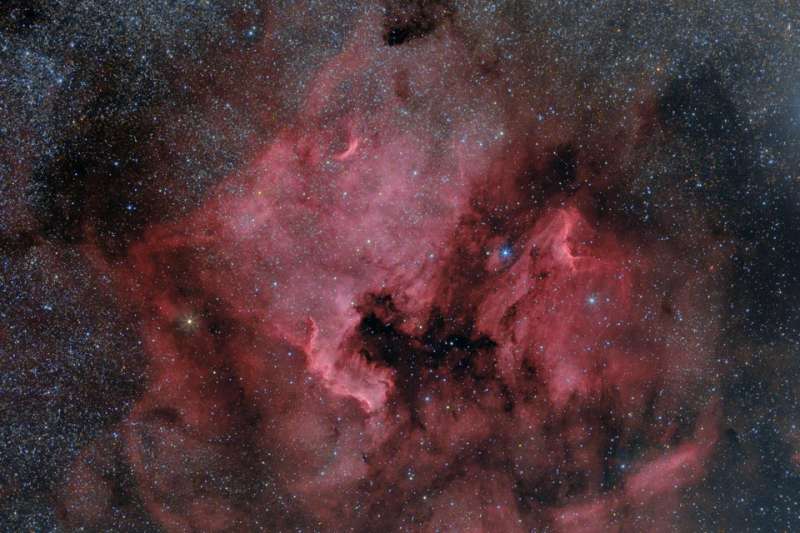Credit & Copyright: Scott
Rosen
Explanation:
Here lie familiar shapes in
unfamiliar
locations.
On the left is an emission
nebula
cataloged as NGC 7000,
famous partly because it resembles our fair planet's continent of
North America.
The emission region to the right of the
North America Nebula
is IC 5070, also known for its suggestive outlines
as the Pelican Nebula.
Separated by a dark cloud of
obscuring dust,
the two bright nebulae are about 1,500 light-years away.
At that distance, the 4 degree wide field of view spans
100 light-years.
This spectacular cosmic portrait combines
narrow band images
to highlight bright
ionization fronts with fine details of
dark, dusty forms in silhouette.
Emission from atomic hydrogen, sulfur, and oxygen is captured in
the narrow band data.
These nebulae can be
seen with binoculars from a dark location.
Look northeast of bright star
Deneb in the constellation of Cygnus the Swan.
No Textbook:
Follow a Free Astronomy Course
1999 2000 2001 2002 2003 2004 2005 2006 2007 2008 2009 2010 2011 2012 2013 2014 2015 2016 2017 2018 2019 2020 2021 2022 2023 2024 2025 |
Январь Февраль Март Апрель Май Июнь Июль Август Сентябрь Октябрь Ноябрь Декабрь |
NASA Web Site Statements, Warnings, and Disclaimers
NASA Official: Jay Norris. Specific rights apply.
A service of: LHEA at NASA / GSFC
& Michigan Tech. U.
|
Публикации с ключевыми словами:
North America Nebula - Pelican Nebula - Туманность Пеликан - эмиссионная туманность
Публикации со словами: North America Nebula - Pelican Nebula - Туманность Пеликан - эмиссионная туманность | |
См. также:
Все публикации на ту же тему >> | |
